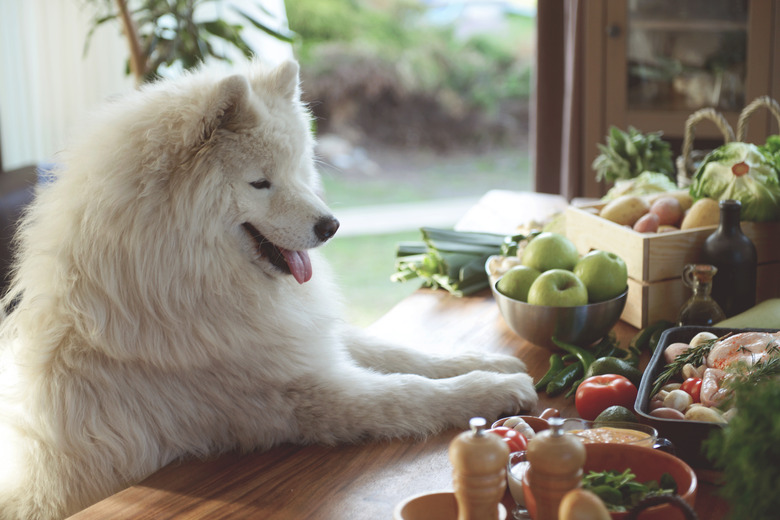What Is Human-Grade Pet Food?
More and more pet parents are taking a closer look at the ingredients, preservatives, and quality of the food they're buying for their dogs and cats. Some people make an effort to avoid certain ingredients like meat by-products. Others opt to purchase pet foods and treats that are grain-free or contain organic and free-range ingredients. Yet another option that's becoming increasingly popular is human-grade pet food.
If you like the idea of giving your canine or feline food with high-quality ingredients, it's worth checking out the human-grade options that are available. After all, better ingredients might boost your pet's overall wellness. However, it's important to understand the basics of the pet industry's standards and regulations first. That way, you can decide if a human-grade pet food is right for your pet.
What is human-grade pet food?
What is human-grade pet food?
There isn't a legal definition for human-grade pet food. But there are a couple of things to look at.
1. The pet ingredients must be edible by humans.
2. All stages of pet food production must be in line with human food production
3. Pet food companies need to meet and follow certain labeling guidelines.
If a pet food manufacturer can prove that they are following all of the standards and regulations for edible human foods, they may be able to label their products human-grade. Though to understand what the term "human-grade" means in the pet food industry, it's a good idea to see what the Association of American Feed Control Officials (AAFCO) and the U.S. Department of Agriculture (USDA) have to say.
The pet food ingredients must be edible by humans
Foods that are deemed fit and safe for human consumption are known as edible. Every ingredient in the product must be deemed edible for humans for it to be considered human-grade. If the food contains any non-edible ingredients, it is considered feed-grade. A feed-grade product means it isn't safe for humans to eat — but it can be fed to animals.
All stages of pet food production must be in line with human food production
Various conditions and regulations have to be met for the USDA to consider a food edible for people. A company needs to follow specific manufacturing, packing, and shipping practices. Furthermore, this includes the processing, handling, transporting, and storing of pet food. Even the facilities used to make pet food should be licensed for human food as well.
For pets, several conditions also need to be met for pet food to be considered truly human-grade for them as well. Pet food makers must follow the appropriate Code of Federal Regulations (CFR). Ultimately, there's quite a bit of work the pet food manufacturers have to do in order to ensure their human-grade claims are accurate.
Human-grade dog food and human-grade cat food labeling requirements
Pet food companies need to meet certain guidelines when it comes to labeling their products. You might already make it a point to read pet food labels carefully to analyze the quality of food before you buy it.
The Food and Drug Administration or FDA also regulates and oversees all aspects of pet food products for animal consumption. From the labeling to the distribution, the FDA has strict rules that pet food companies must abide by in order to sell their product.
When it comes to human-grade pet food, keep in mind that the packaging should also state that the intended use of the food is for pets — not people. Sure, it says human-grade, but it doesn't mean you should eat it.
Are human-grade ingredients safe?
Are human-grade ingredients safe?
One thing to keep in mind is that a human-grade label doesn't necessarily mean the food will be safe for your dog or cat. It is still wise to look at the details and ingredients to be sure the food is species-appropriate and nutritionally balanced for your pet's life stage. Be sure to ask your pet's veterinarian if you have any questions regarding ingredients before giving it to your pet.
It's also a great idea to do some research on a manufacturer and their products to learn more about the steps they take to ensure their foods are human-grade and human-edible. For example, you could contact them to ask about their manufacturing facility, the quality of their ingredients, and the sources of their ingredients.
The bottom line
The bottom line
Many pet businesses have started making human-grade foods for dogs and cats. You can find wet, dry, and freeze-dried foods. There are also treats and toppers labeled human-grade. It's important to be familiar with the differences between human-grade and feed-grade requirements, Especially when it comes to manufacturing processes and ingredient quality. That way, you'll know what a pet food company needs to do in order to truthfully claim their food is human-grade. Always ask your pet's veterinarian if you have any questions about a pet food's human-grade ingredients — before giving it to your pet.


